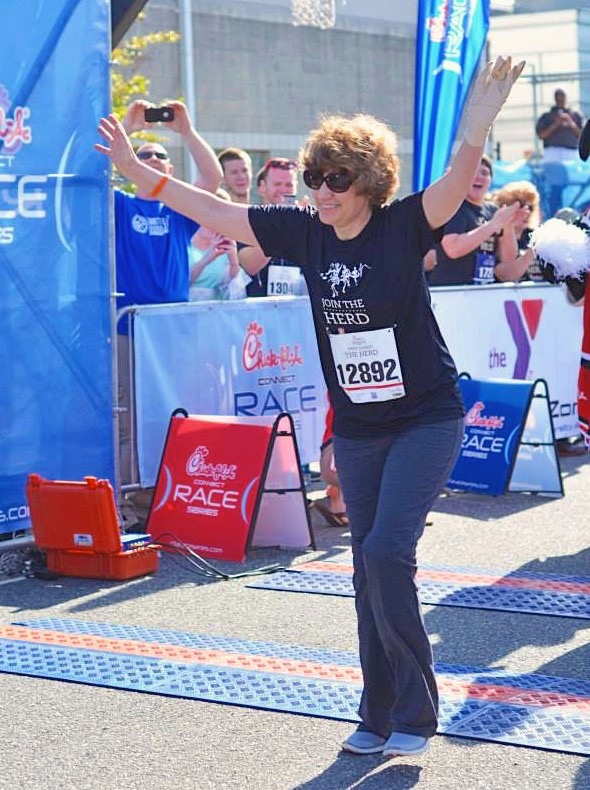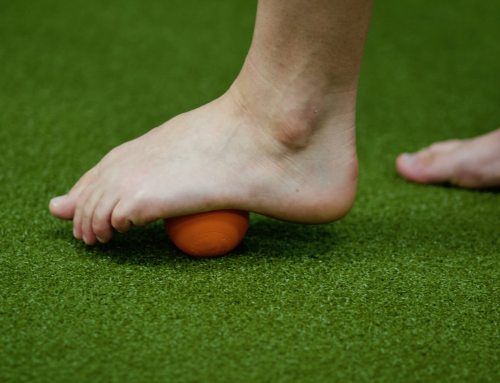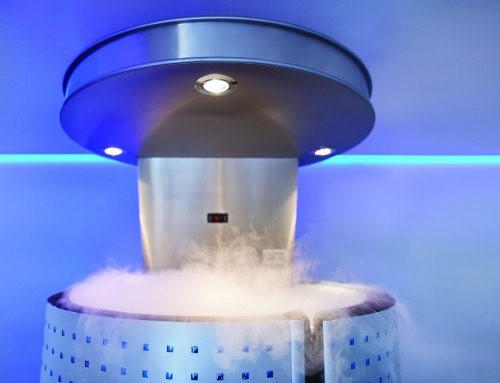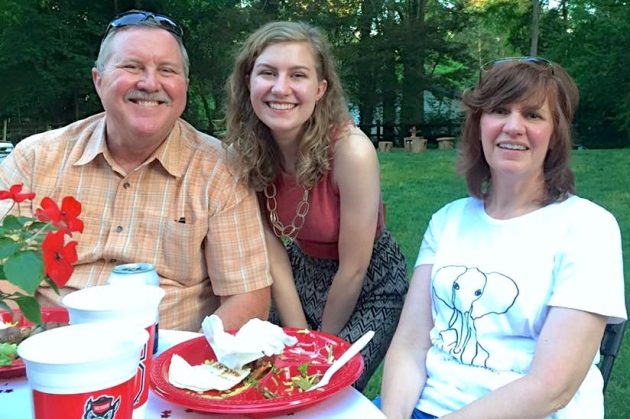 Martha Nauman, a resident of Huntersville, NC, has always been passionate about being an athlete, teacher, and mother. However, in February 2013, she faced a serious health situation that would lead her to find even greater ways to inspire others.
Martha Nauman, a resident of Huntersville, NC, has always been passionate about being an athlete, teacher, and mother. However, in February 2013, she faced a serious health situation that would lead her to find even greater ways to inspire others.
Nauman was rarely sick, paid close attention to her diet, and was physically active. One day, she came down with severe flu-like symptoms and headed to an urgent care where she was diagnosed with pneumonia and prescribed antibiotics. Over the next 36 hours, her condition grew progressively worse.
“My husband called 911 because I could barely lift my head off my pillow and couldn’t maneuver around my house without guidance,” Nauman said. “The paramedics thought I was having a heart attack.”
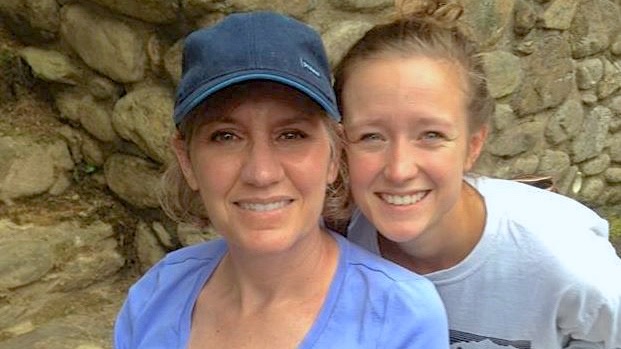 Nauman was brought to Novant Health Presbyterian Medical Center where doctors found that her pneumonia had caused a serious sepsis infection, which could quickly lead to tissue damage, organ failure and death. Nauman’s blood pressure had become virtually non-existent and her chances of survival were extremely low. Fortunately, doctors quickly determined that Nauman’s chances could improve if they were able to redirect blood flow to her vital organs. In the end, she survived the immediate complications and spent five weeks in the hospital recovering.
Nauman was brought to Novant Health Presbyterian Medical Center where doctors found that her pneumonia had caused a serious sepsis infection, which could quickly lead to tissue damage, organ failure and death. Nauman’s blood pressure had become virtually non-existent and her chances of survival were extremely low. Fortunately, doctors quickly determined that Nauman’s chances could improve if they were able to redirect blood flow to her vital organs. In the end, she survived the immediate complications and spent five weeks in the hospital recovering.
Part of Nauman’s recovery plan included physical therapy due to profound weakness, loss of muscle tone and flexibility, and loss of blood flow to both her legs and a number of her fingers.
Road to Recovery
Whitney Fulton, a physical therapist with Novant Health Presbyterian Medical Center, said the quickest road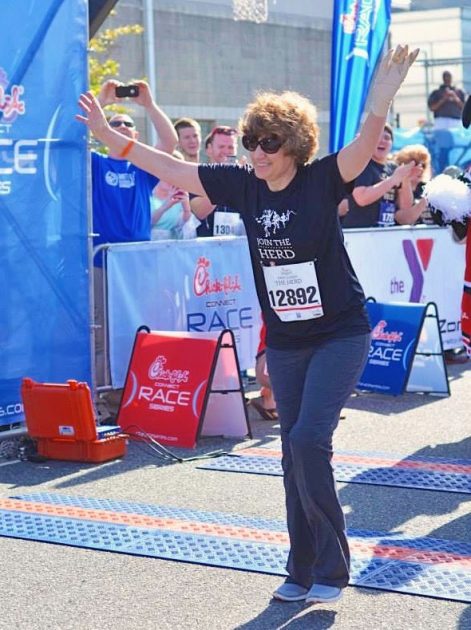 to recovery meant beginning physical therapy as soon as possible.
to recovery meant beginning physical therapy as soon as possible.
“I met with Martha while she was still in the ICU and encouraged her to do basic range of motion and strengthening exercises, and helped her sit up in a chair before her ventilator was even removed,” Fulton said.
At the time, Nauman didn’t realize how sick she was. “Whitney told me that we were going to take it slowly,” Nauman said. “All she wanted me to do on my first day of therapy was to sit up in bed. I thought she was kidding. Of course, I could sit up. I run, swim, and bike on a regular basis. Boy was I wrong. When I first sat up I felt like a rag doll; I just swayed back and forth.”
During the course of Nauman’s hospitalization her therapy progressed to gait training, higher level balance activities, and stair training.
After several weeks, Nauman was released from Novant Health Presbyterian Medical Center and began outpatient physical therapy. The therapy proved to be very beneficial but the damage to Nauman’s legs was so severe that they would eventually require amputation.
After having both legs amputated to the knee and losing several fingers, due to lack of blood flow, Nauman would understand the true importance of setting short- and long-term goals. First, she wanted to walk, then walk to the mailbox, walk her dogs, and eventually walk a 5K. It was tough, but over time, she would accomplish all of these things and much more.
“Physical therapy is hard,” Nauman said. “You have to accept that some days it is going to be harder than others, but you should never give up. Keep trying, but be forgiving. There wasn’t one day that Whitney didn’t believe I couldn’t do something, which made me believe in myself. She was even there with me on the weekends to do therapy.”
‘Keep trying’
Today, three years later, Nauman practices Pilates twice a week, weight trains, does agility exercises with her dogs, and even runs and rides a stationary bike – all with two prosthetic legs and the mantra to “keep trying.” She has also become an advocate for other amputees.
Nauman and Fulton have decided to tell their story to help spread the word about the benefits of physical therapy treatment in recovery.
Physical therapy is one of the best ways to restore your activity, strength and quality-of-life following an injury or surgery. Therapists are knowledgeable about each patient’s medical condition and are experienced in tailoring their treatment to each patient to achieve treatment goals and optimal recovery but, it’s a team effort with the patient, Fulton said.
“Physical therapy can be intimidating for a patient that just experienced a major injury or surgical procedure,” she said. “Patients tell me they can’t perform certain activities or even move to a chair but even a little bit of movement helps.”
She cautioned that remaining sedentary for a long period of time can lead to secondary illnesses, including pneumonia, blood clots, weakness, and back and joint pain. Physical therapy can help combat these types of complications.
“If you or a loved one is in the hospital and a doctor hasn’t recommended physical therapy, you should feel empowered to ask if you or your loved one may benefit from receiving therapy,” Fulton said. “The more you get up and move, the better.”
# # #
To learn more about how you can get back in the game with physical therapy services offered by Novant Health. Visit NovantHealth.org.


